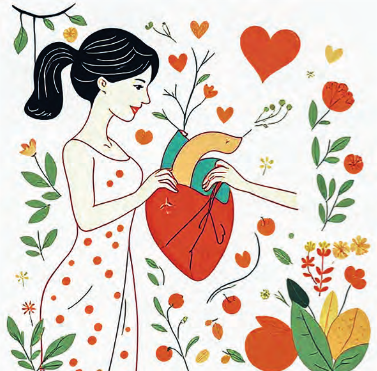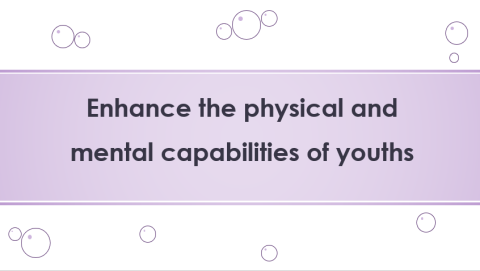According to Myanmar’s Youth Policy, individuals aged between 15 and 35 are classified as youth. Globally, the United Nations estimates that there are approximately 1.2 billion young people, with 85 per cent residing in developing countries. However, only a small portion of youth worldwide are fully integrated into their communities and have access to essential education and services. Most face significant challenges, including poverty, limited educational and healthcare opportunities, risks of drug abuse and violence, armed conflicts, and scarce employment prospects.
According to Myanmar’s Youth Policy, individuals aged between 15 and 35 are classified as youth. Globally, the United Nations estimates that there are approximately 1.2 billion young people, with 85 per cent residing in developing countries. However, only a small portion of youth worldwide are fully integrated into their communities and have access to essential education and services. Most face significant challenges, including poverty, limited educational and healthcare opportunities, risks of drug abuse and violence, armed conflicts, and scarce employment prospects.
In Myanmar, the Youth Policy was formulated and adopted in November 2017 to provide a strategic framework that supports the positive development of youth across various sectors such as politics, economy, education, society, culture, and development. The policy recognizes that youth and education are inseparable. Through education, young people are nurtured to become capable, well-rounded, and outstanding individuals. To this end, Myanmar implements an annual Human Resource Development Plan to enhance and maximize youth potential.
The theme for International Youth Day (IYD) 2025 is “Local Youth Actions for the SDGs and Beyond.” This theme highlights the crucial role young people play in turning global development goals into concrete actions at the community level. It stresses the importance of youth-led initiatives in achieving the Sustainable Development Goals (SDGs) and advancing beyond them. This year’s IYD also marks the lead-up to the 30th anniversary of the World Programme of Action for Youth, a guiding framework that recognizes youth as key drivers in sustainable development and participatory governance. Discussions on this theme will contribute to preparations for the Second World Summit for Social Development scheduled in Doha in November.
GNLM
According to Myanmar’s Youth Policy, individuals aged between 15 and 35 are classified as youth. Globally, the United Nations estimates that there are approximately 1.2 billion young people, with 85 per cent residing in developing countries. However, only a small portion of youth worldwide are fully integrated into their communities and have access to essential education and services. Most face significant challenges, including poverty, limited educational and healthcare opportunities, risks of drug abuse and violence, armed conflicts, and scarce employment prospects.
In Myanmar, the Youth Policy was formulated and adopted in November 2017 to provide a strategic framework that supports the positive development of youth across various sectors such as politics, economy, education, society, culture, and development. The policy recognizes that youth and education are inseparable. Through education, young people are nurtured to become capable, well-rounded, and outstanding individuals. To this end, Myanmar implements an annual Human Resource Development Plan to enhance and maximize youth potential.
The theme for International Youth Day (IYD) 2025 is “Local Youth Actions for the SDGs and Beyond.” This theme highlights the crucial role young people play in turning global development goals into concrete actions at the community level. It stresses the importance of youth-led initiatives in achieving the Sustainable Development Goals (SDGs) and advancing beyond them. This year’s IYD also marks the lead-up to the 30th anniversary of the World Programme of Action for Youth, a guiding framework that recognizes youth as key drivers in sustainable development and participatory governance. Discussions on this theme will contribute to preparations for the Second World Summit for Social Development scheduled in Doha in November.
GNLM

Talented golf players have emerged in Myanmar over the years, and to ensure continued development without generational gaps, efforts are being made to nurture young golfers both locally and abroad, according to Junior Golf Myanmar.
Talented golf players have emerged in Myanmar over the years, and to ensure continued development without generational gaps, efforts are being made to nurture young golfers both locally and abroad, according to Junior Golf Myanmar.
According to U Kyaw Kyaw Min Lat, General Secretary of Junior Golf Myanmar, “Myanmar has produced remarkable golfers in the past who once made their mark on the international scene. Golf success largely depends on access to structured training and support. In countries like Thailand, private companies actively support the development of young talent. Myanmar’s youth are also highly capable, and to bridge the gap between older players and the younger generation, we are currently developing new talents between the ages of 10 and 18. They regularly participate in domestic and international tournaments to gain competitive experience.”
Some young Myanmar golfers are currently studying at international golf academies, especially in the United States, where they combine golf training (70 per cent) with academic education (30 per cent). These youths represent their schools in tournaments and have shown promising results, with some continuing into golf careers upon graduation.
The colonial-era Thayet Golf Course in Magway Region, built in a similar design to the famed St Andrews Golf Course in the United Kingdom, still allows reciprocal play at St Andrews for its members. In Yangon, major golf courses where local golfers train include Yangon Golf Club (Danyingon), Defence Services Golf Course, Okkalapa Golf Course, YCDC Golf Course, Mingaladon Golf Course, Punhlaing Golf Course, 9th-Mile Golf Course, Star City Golf Course, and Ngwe Thawda Golf Course.
Beyond Yangon, other golf courses include two in PyinOoLwin, two in Taunggyi, the Royal Palace Golf Course and Mandalay Hill Golf Course in Mandalay, as well as Myotha and Shwe Sar Yan Golf Courses, which continue to host training and local tournaments.
Junior golfers from Myanmar under the age of 20 are also competing overseas. In the US, they participate in school-sanctioned tournaments while continuing their formal studies. Some have successfully transitioned into professional or semi-professional roles at the very institutions where they trained.
To ensure the growth and sustainability of the sport, the Myanmar Golf Federation (MGF) and affiliated bodies conduct seasonal training programmes. Local golf associations are also sending promising youth to compete in both local and international events to gain vital experience.
Given that golf is a high-cost sport, collaboration among parents, clubs, and the state is essential to support young athletes and to raise Myanmar’s standing in international competitions.
Golf is a sport played by striking a rubber-cored ball with clubs, typically 12 to 14 in a set, towards a series of nine to eighteen holes, intending to use the fewest strokes. The game has been played in Myanmar since colonial times and remains a popular sport to this day.
Globally renowned professional golfers include Tiger Woods, Jack Nicklaus, Golden Bell, Walter Hagen, Ben Hogan, and Arnold Palmer. In Myanmar, notable past golfers include U Mya Aye, U Zaw Moe, and U Kyi Hla Han. The Myanmar Golf Federation continues to host domestic tournaments to further raise the skill level of its players and enhance international competitiveness. — Thitsa (MNA)/KZL
GNLM
Talented golf players have emerged in Myanmar over the years, and to ensure continued development without generational gaps, efforts are being made to nurture young golfers both locally and abroad, according to Junior Golf Myanmar.
According to U Kyaw Kyaw Min Lat, General Secretary of Junior Golf Myanmar, “Myanmar has produced remarkable golfers in the past who once made their mark on the international scene. Golf success largely depends on access to structured training and support. In countries like Thailand, private companies actively support the development of young talent. Myanmar’s youth are also highly capable, and to bridge the gap between older players and the younger generation, we are currently developing new talents between the ages of 10 and 18. They regularly participate in domestic and international tournaments to gain competitive experience.”
Some young Myanmar golfers are currently studying at international golf academies, especially in the United States, where they combine golf training (70 per cent) with academic education (30 per cent). These youths represent their schools in tournaments and have shown promising results, with some continuing into golf careers upon graduation.
The colonial-era Thayet Golf Course in Magway Region, built in a similar design to the famed St Andrews Golf Course in the United Kingdom, still allows reciprocal play at St Andrews for its members. In Yangon, major golf courses where local golfers train include Yangon Golf Club (Danyingon), Defence Services Golf Course, Okkalapa Golf Course, YCDC Golf Course, Mingaladon Golf Course, Punhlaing Golf Course, 9th-Mile Golf Course, Star City Golf Course, and Ngwe Thawda Golf Course.
Beyond Yangon, other golf courses include two in PyinOoLwin, two in Taunggyi, the Royal Palace Golf Course and Mandalay Hill Golf Course in Mandalay, as well as Myotha and Shwe Sar Yan Golf Courses, which continue to host training and local tournaments.
Junior golfers from Myanmar under the age of 20 are also competing overseas. In the US, they participate in school-sanctioned tournaments while continuing their formal studies. Some have successfully transitioned into professional or semi-professional roles at the very institutions where they trained.
To ensure the growth and sustainability of the sport, the Myanmar Golf Federation (MGF) and affiliated bodies conduct seasonal training programmes. Local golf associations are also sending promising youth to compete in both local and international events to gain vital experience.
Given that golf is a high-cost sport, collaboration among parents, clubs, and the state is essential to support young athletes and to raise Myanmar’s standing in international competitions.
Golf is a sport played by striking a rubber-cored ball with clubs, typically 12 to 14 in a set, towards a series of nine to eighteen holes, intending to use the fewest strokes. The game has been played in Myanmar since colonial times and remains a popular sport to this day.
Globally renowned professional golfers include Tiger Woods, Jack Nicklaus, Golden Bell, Walter Hagen, Ben Hogan, and Arnold Palmer. In Myanmar, notable past golfers include U Mya Aye, U Zaw Moe, and U Kyi Hla Han. The Myanmar Golf Federation continues to host domestic tournaments to further raise the skill level of its players and enhance international competitiveness. — Thitsa (MNA)/KZL
GNLM

In the early morning light, the rhythmic chants of young novices echo through the tranquil compounds of monasteries across Myanmar. These sacred spaces are not only spiritual sanctuaries but also vital centers of learning, providing free education to hundreds of thousands of children, especially in rural areas where government schools are scarce. Monastic education has been a cornerstone of Myanmar’s sociocultural fabric for centuries, blending religious instruction with secular knowledge to sustain both tradition and progress.
In the early morning light, the rhythmic chants of young novices echo through the tranquil compounds of monasteries across Myanmar. These sacred spaces are not only spiritual sanctuaries but also vital centers of learning, providing free education to hundreds of thousands of children, especially in rural areas where government schools are scarce. Monastic education has been a cornerstone of Myanmar’s sociocultural fabric for centuries, blending religious instruction with secular knowledge to sustain both tradition and progress. Often seen as the spiritual backbone of Burmese society, these schools do far more than teach religious doctrine. They stand as critical institutions that fill educational gaps, preserve cultural heritage, and uplift underprivileged communities. For international observers seeking to understand the heart of Myanmar, the story of monastic education offers a compelling glimpse into the resilience and compassion of its people.
A Deep-Rooted Legacy
Monastic education in Myanmar dates back over a thousand years, tracing its origins to the introduction of Theravāda Buddhism in the region. Historically, monasteries (locally known as Phone Gyee kyaung) were the primary centers of learning, long before the advent of colonial or modern state-run schools. Monks played the dual roles of spiritual leaders and teachers, providing instruction in Pāli scriptures, ethics, literacy, and numeracy. This system was not only inclusive—open to all boys regardless of class—but also deeply intertwined with daily life and moral upbringing.
During the Konbaung Dynasty (1752–1885), monastic schools were instrumental in fostering a high literacy rate, particularly among males. British colonial records even noted that literacy in Burma was higher than in many parts of the British Empire. Despite changes in governance and the evolution of public education systems, monastic schools have maintained their relevance, especially in rural areas.
A Lifeline for Rural and Marginalized Communities
In contemporary Myanmar, where many rural and impoverished areas still struggle with inadequate infrastructure and limited access to government schools, monastic schools play a vital role. Often supported by donations and volunteer teachers, these schools provide free education, food, and sometimes even lodging to children who might otherwise remain illiterate.
For families who cannot afford school uniforms, textbooks, or transportation costs, monastic schools are not just an option—they are the only hope. They offer basic education from primary to middle school level, with some even extending to high school or vocational training. These schools often operate with limited resources, yet their commitment to inclusive education is unwavering.
According to UNICEF and local NGOs, monastic education serves over 300,000 children across Myanmar. Many of these students come from ethnic minority backgrounds or internally displaced communities, highlighting the schools’ crucial role in promoting social inclusion and cohesion in a multi-ethnic nation.
Preserving Culture, Instilling Values
Beyond academic instruction, monastic schools play a key role in instilling cultural identity and moral values. In an increasingly globalized world, where materialism and rapid change challenge traditional norms, these schools offer grounding in Buddhist principles—compassion, mindfulness, and community service.
The curriculum often integrates traditional arts such as poetry, palm-leaf manuscript reading, chanting, and classical Burmese music. In doing so, they act as custodians of Myanmar's intangible cultural heritage, fostering a sense of pride and identity among young learners.
"Many families here cannot afford to send their children to state schools," says Sayadaw U Nyanissara, a senior monk overseeing a monastic school in Shan State. "We take them in, provide food, shelter, and education, so they have a chance for a better future."
These schools follow a hybrid curriculum, combining Myanmar’s state syllabus with Buddhist teachings. Students learn mathematics, science, and English alongside moral education, meditation, and scripture—a blend that fosters both intellectual and ethical development.
Moreover, monastic education offers spiritual sanctuary and stability, especially in times of political unrest or conflict. During such periods, monasteries become safe havens not only for learning but also for emotional and social support.
Success Stories Rooted in Humility
Though humble in appearance, many monastic schools have produced remarkable success stories. Former students of monastic education have gone on to become teachers, community leaders, doctors, and even members of Parliament. Some schools have partnered with NGOs and international donors to enhance teaching standards, introduce modern pedagogical methods, and expand access to technology.
One notable example is the Phaung Daw Oo Monastic School in Mandalay, which offers both secular and monastic education to over 7,000 students. With support from local and international donors, the school has introduced inclusive education for children with disabilities, computer training, and even teacher training programs. Its success demonstrates how monastic education can evolve while staying true to its core values.
An Invitation to the World
For international travelers, scholars, and donors, monastic education in Myanmar offers a unique opportunity to witness the intersection of tradition and progress. Visiting a monastic school means stepping into a world where simplicity meets depth, where young children chant Buddhist verses in the morning and study science in the afternoon, and where learning is rooted in community compassion.
Organizations and individuals who wish to support educational development in Myanmar would find monastic schools a meaningful point of engagement. Support could range from providing school supplies to sponsoring teacher training or even facilitating cultural exchange programs.
Conclusion
In the heart of Myanmar’s monastic schools lies a powerful message: education is not merely a tool for economic advancement—it is a path to ethical living, social harmony, and national resilience. As Myanmar continues to navigate complex political and economic challenges, monastic education stands as a testament to the enduring strength of its people and culture.
For the international community, understanding and supporting these schools is more than an act of charity—it is a partnership in preserving a legacy that continues to nurture the soul of a nation.
NP News
In the early morning light, the rhythmic chants of young novices echo through the tranquil compounds of monasteries across Myanmar. These sacred spaces are not only spiritual sanctuaries but also vital centers of learning, providing free education to hundreds of thousands of children, especially in rural areas where government schools are scarce. Monastic education has been a cornerstone of Myanmar’s sociocultural fabric for centuries, blending religious instruction with secular knowledge to sustain both tradition and progress. Often seen as the spiritual backbone of Burmese society, these schools do far more than teach religious doctrine. They stand as critical institutions that fill educational gaps, preserve cultural heritage, and uplift underprivileged communities. For international observers seeking to understand the heart of Myanmar, the story of monastic education offers a compelling glimpse into the resilience and compassion of its people.
A Deep-Rooted Legacy
Monastic education in Myanmar dates back over a thousand years, tracing its origins to the introduction of Theravāda Buddhism in the region. Historically, monasteries (locally known as Phone Gyee kyaung) were the primary centers of learning, long before the advent of colonial or modern state-run schools. Monks played the dual roles of spiritual leaders and teachers, providing instruction in Pāli scriptures, ethics, literacy, and numeracy. This system was not only inclusive—open to all boys regardless of class—but also deeply intertwined with daily life and moral upbringing.
During the Konbaung Dynasty (1752–1885), monastic schools were instrumental in fostering a high literacy rate, particularly among males. British colonial records even noted that literacy in Burma was higher than in many parts of the British Empire. Despite changes in governance and the evolution of public education systems, monastic schools have maintained their relevance, especially in rural areas.
A Lifeline for Rural and Marginalized Communities
In contemporary Myanmar, where many rural and impoverished areas still struggle with inadequate infrastructure and limited access to government schools, monastic schools play a vital role. Often supported by donations and volunteer teachers, these schools provide free education, food, and sometimes even lodging to children who might otherwise remain illiterate.
For families who cannot afford school uniforms, textbooks, or transportation costs, monastic schools are not just an option—they are the only hope. They offer basic education from primary to middle school level, with some even extending to high school or vocational training. These schools often operate with limited resources, yet their commitment to inclusive education is unwavering.
According to UNICEF and local NGOs, monastic education serves over 300,000 children across Myanmar. Many of these students come from ethnic minority backgrounds or internally displaced communities, highlighting the schools’ crucial role in promoting social inclusion and cohesion in a multi-ethnic nation.
Preserving Culture, Instilling Values
Beyond academic instruction, monastic schools play a key role in instilling cultural identity and moral values. In an increasingly globalized world, where materialism and rapid change challenge traditional norms, these schools offer grounding in Buddhist principles—compassion, mindfulness, and community service.
The curriculum often integrates traditional arts such as poetry, palm-leaf manuscript reading, chanting, and classical Burmese music. In doing so, they act as custodians of Myanmar's intangible cultural heritage, fostering a sense of pride and identity among young learners.
"Many families here cannot afford to send their children to state schools," says Sayadaw U Nyanissara, a senior monk overseeing a monastic school in Shan State. "We take them in, provide food, shelter, and education, so they have a chance for a better future."
These schools follow a hybrid curriculum, combining Myanmar’s state syllabus with Buddhist teachings. Students learn mathematics, science, and English alongside moral education, meditation, and scripture—a blend that fosters both intellectual and ethical development.
Moreover, monastic education offers spiritual sanctuary and stability, especially in times of political unrest or conflict. During such periods, monasteries become safe havens not only for learning but also for emotional and social support.
Success Stories Rooted in Humility
Though humble in appearance, many monastic schools have produced remarkable success stories. Former students of monastic education have gone on to become teachers, community leaders, doctors, and even members of Parliament. Some schools have partnered with NGOs and international donors to enhance teaching standards, introduce modern pedagogical methods, and expand access to technology.
One notable example is the Phaung Daw Oo Monastic School in Mandalay, which offers both secular and monastic education to over 7,000 students. With support from local and international donors, the school has introduced inclusive education for children with disabilities, computer training, and even teacher training programs. Its success demonstrates how monastic education can evolve while staying true to its core values.
An Invitation to the World
For international travelers, scholars, and donors, monastic education in Myanmar offers a unique opportunity to witness the intersection of tradition and progress. Visiting a monastic school means stepping into a world where simplicity meets depth, where young children chant Buddhist verses in the morning and study science in the afternoon, and where learning is rooted in community compassion.
Organizations and individuals who wish to support educational development in Myanmar would find monastic schools a meaningful point of engagement. Support could range from providing school supplies to sponsoring teacher training or even facilitating cultural exchange programs.
Conclusion
In the heart of Myanmar’s monastic schools lies a powerful message: education is not merely a tool for economic advancement—it is a path to ethical living, social harmony, and national resilience. As Myanmar continues to navigate complex political and economic challenges, monastic education stands as a testament to the enduring strength of its people and culture.
For the international community, understanding and supporting these schools is more than an act of charity—it is a partnership in preserving a legacy that continues to nurture the soul of a nation.
NP News

The Myanmar Photographic Society, in accordance with the motto “Let the world recognize us through the art of photography,” continues to participate in international photography competitions and exhibitions. Meanwhile, foreign countries tend to show special interest in artistic photographs that portray the natural beauty of traditional culture and rural landscapes, rather than those created using advanced technological methods.
The Myanmar Photographic Society, in accordance with the motto “Let the world recognize us through the art of photography,” continues to participate in international photography competitions and exhibitions. Meanwhile, foreign countries tend to show special interest in artistic photographs that portray the natural beauty of traditional culture and rural landscapes, rather than those created using advanced technological methods.
The Myanmar Photographic Society has its motto “Let the world recognize us through the art of photography” for a long time. Last month, Myanmar, South Africa, and Indonesia submitted nature photographs to FIAP as part of a competition. There are also many other international competitions. In October, the Myanmar Photographic Society will attend a cultural photography exhibition in China. Countries around the world usually give awards to photos that show culture and tradition, more than the photos taken with modern technology, like underwater or aerial shots. For example, they are very interested in photos of Bagan pagodas and the Thingyan Water Festival. The Myanmar Photographic Society is always trying to show the world Myanmar’s natural beauty, ancient culture, and traditional customs,” said U Than Tun Oo, chairman of the society.
The Myanmar Photographic Society is a member of FIAP (The International Federation of Photographic Art), comprising over 100 member states, and it organized the 1st Myanmar International Photography Salon in 2018. It competes in international photo exhibitions and competitions every year, and it highlights the natural beauty, culture and traditions of ethnic people, and there are fewer photo submissions in the underwater and aerial photography categories, as they require expensive technology.
“I am currently photographing and documenting the lives and lifestyles of the Salon people. We can say it is a detailed documentary of a specific ethnic group. Underwater photography usually draws international interest. However, when it comes to artistic recognition, the conceptual photography category often gets more attention. Underwater photography is great for adventure and exploration. As for me, as I live near the sea, I enjoy both types of photography,” said photographer Ko Pyi Soe Tun (artist).
The Myanmar Photographic Society was established as Rangoon Photographic Society on 21 November 1950. In 1955, it changed to the Myanmar Photographic Society and opened an office at the lower block of 35th Street in Yangon in 1963. It celebrated its 50th anniversary event, and marked its 75th anniversary with the 58th Myanmar National Photography Art Exhibition. This year, the exhibition was held from 13 to 16 March at Sule Square. — Thitsa (MNA)/KTZH
Source: GNLM
The Myanmar Photographic Society, in accordance with the motto “Let the world recognize us through the art of photography,” continues to participate in international photography competitions and exhibitions. Meanwhile, foreign countries tend to show special interest in artistic photographs that portray the natural beauty of traditional culture and rural landscapes, rather than those created using advanced technological methods.
The Myanmar Photographic Society has its motto “Let the world recognize us through the art of photography” for a long time. Last month, Myanmar, South Africa, and Indonesia submitted nature photographs to FIAP as part of a competition. There are also many other international competitions. In October, the Myanmar Photographic Society will attend a cultural photography exhibition in China. Countries around the world usually give awards to photos that show culture and tradition, more than the photos taken with modern technology, like underwater or aerial shots. For example, they are very interested in photos of Bagan pagodas and the Thingyan Water Festival. The Myanmar Photographic Society is always trying to show the world Myanmar’s natural beauty, ancient culture, and traditional customs,” said U Than Tun Oo, chairman of the society.
The Myanmar Photographic Society is a member of FIAP (The International Federation of Photographic Art), comprising over 100 member states, and it organized the 1st Myanmar International Photography Salon in 2018. It competes in international photo exhibitions and competitions every year, and it highlights the natural beauty, culture and traditions of ethnic people, and there are fewer photo submissions in the underwater and aerial photography categories, as they require expensive technology.
“I am currently photographing and documenting the lives and lifestyles of the Salon people. We can say it is a detailed documentary of a specific ethnic group. Underwater photography usually draws international interest. However, when it comes to artistic recognition, the conceptual photography category often gets more attention. Underwater photography is great for adventure and exploration. As for me, as I live near the sea, I enjoy both types of photography,” said photographer Ko Pyi Soe Tun (artist).
The Myanmar Photographic Society was established as Rangoon Photographic Society on 21 November 1950. In 1955, it changed to the Myanmar Photographic Society and opened an office at the lower block of 35th Street in Yangon in 1963. It celebrated its 50th anniversary event, and marked its 75th anniversary with the 58th Myanmar National Photography Art Exhibition. This year, the exhibition was held from 13 to 16 March at Sule Square. — Thitsa (MNA)/KTZH
Source: GNLM

A village in the middle part of Myanmar has become famous for its children who preserve the traditional San-yit-wine hairstyle (a style of hairdo with a top knot and a circular fringe). Children in this village, both boys and girls, traditionally keep this hairstyle.
A village in the middle part of Myanmar has become famous for its children who preserve the traditional San-yit-wine hairstyle (a style of hairdo with a top knot and a circular fringe). Children in this village, both boys and girls, traditionally keep this hairstyle.
The village is called Yepotegyi, located in Pwintbyu township of Magway Region. It is about a 20-minute drive, although the transportation was in bad condition in the past. When a person hears Yepotegyi village, they automatically know the San-yit-wine hairstyle. There are about 700 people who wear that hairstyle. All the children, both boys and girls, wear that hairstyle, and the hairstyle for girls is called San-yit-wine and the Yaung-pay-sue for boys, said the villagers.
“ In our village, the infants have a hairstyle called Usunphoke on their heads. This hairstyle symbolizes that the child is still at an age when they shelter in their mother’s arms. When the children reach the age of three or four, they wear a Kyet-taung-see hairstyle that proves that they have grown from the breastfeeding stage, and are now old enough to walk and play on their own,” said Ma Pyone Pyone Yi, the leader of women in the village.
“When they are nine or ten years old, the Kyet-taung-see hair becomes long and girls make a hair knot on their heads, while the boys make a Yaung-pay-sue hairstyle. It shows that they are old enough to go to school.”
“When the girls are 15 or 16 years old, they wear a Japanese Hsahtauk hairstyle. Such a hairstyle shows that the girls have passed their childhood stage and entered their virginity, and it can also distinguish between the virgins and married ones,” she added.
“When they are 17 or 18, they change to keep hairstyle of curving hair. It means the girls reach the age of puberty, and anyone can make a proposal to her. Such a hairstyle symbolizes the words that they do not want to say in person. The married women remove the San-yit-wine, and it means they are married and no one can propose to them. My grandmother told me like that,” she said.
She continued, “When I visited the other villages, some teased me like I was wearing chicken litter or cow litter on my head. Therefore, I don’t want to have such a hairstyle. I also told my parents that I did not want to have such a hairstyle anymore. At that time, my grandmother told me that it was our traditional San-yit-wine conserved since your ancestors. Then, I understand it well.”
Therefore, valuing the traditional culture is a sign of love for people. Loving people is for the country, and so all should conserve the tradition and culture for the youths, the country and the races. — Zeyar Naing (Shwe Kan Myay)/KTZH
Source: The Global New Light of Myanmar
A village in the middle part of Myanmar has become famous for its children who preserve the traditional San-yit-wine hairstyle (a style of hairdo with a top knot and a circular fringe). Children in this village, both boys and girls, traditionally keep this hairstyle.
The village is called Yepotegyi, located in Pwintbyu township of Magway Region. It is about a 20-minute drive, although the transportation was in bad condition in the past. When a person hears Yepotegyi village, they automatically know the San-yit-wine hairstyle. There are about 700 people who wear that hairstyle. All the children, both boys and girls, wear that hairstyle, and the hairstyle for girls is called San-yit-wine and the Yaung-pay-sue for boys, said the villagers.
“ In our village, the infants have a hairstyle called Usunphoke on their heads. This hairstyle symbolizes that the child is still at an age when they shelter in their mother’s arms. When the children reach the age of three or four, they wear a Kyet-taung-see hairstyle that proves that they have grown from the breastfeeding stage, and are now old enough to walk and play on their own,” said Ma Pyone Pyone Yi, the leader of women in the village.
“When they are nine or ten years old, the Kyet-taung-see hair becomes long and girls make a hair knot on their heads, while the boys make a Yaung-pay-sue hairstyle. It shows that they are old enough to go to school.”
“When the girls are 15 or 16 years old, they wear a Japanese Hsahtauk hairstyle. Such a hairstyle shows that the girls have passed their childhood stage and entered their virginity, and it can also distinguish between the virgins and married ones,” she added.
“When they are 17 or 18, they change to keep hairstyle of curving hair. It means the girls reach the age of puberty, and anyone can make a proposal to her. Such a hairstyle symbolizes the words that they do not want to say in person. The married women remove the San-yit-wine, and it means they are married and no one can propose to them. My grandmother told me like that,” she said.
She continued, “When I visited the other villages, some teased me like I was wearing chicken litter or cow litter on my head. Therefore, I don’t want to have such a hairstyle. I also told my parents that I did not want to have such a hairstyle anymore. At that time, my grandmother told me that it was our traditional San-yit-wine conserved since your ancestors. Then, I understand it well.”
Therefore, valuing the traditional culture is a sign of love for people. Loving people is for the country, and so all should conserve the tradition and culture for the youths, the country and the races. — Zeyar Naing (Shwe Kan Myay)/KTZH
Source: The Global New Light of Myanmar

KEY POINTS
The research highlights the urgent need for global action to reduce UPF intake through regulatory and fiscal policies that promote healthier dietary environments.
Lead investigator Eduardo Augusto Fernandes Nilson emphasizes that UPFs, which are largely devoid of whole foods and rich in harmful additives, pose a serious health risk linked to various diseases and should be prioritized in public nutrition strategies.
KEY POINTS
The research highlights the urgent need for global action to reduce UPF intake through regulatory and fiscal policies that promote healthier dietary environments.
Lead investigator Eduardo Augusto Fernandes Nilson emphasizes that UPFs, which are largely devoid of whole foods and rich in harmful additives, pose a serious health risk linked to various diseases and should be prioritized in public nutrition strategies.
A STUDY analyzing data from nationally representative dietary surveys and mortality data from eight countries (Australia, Brazil, Canada, Chile, Colombia, Mexico, United Kingdom, and United States) shows that premature deaths attributable to consumption of ultraprocessed foods (UPFs) increase significantly according to their share in individuals’ total energy intake.
The new study, appearing in the American Journal of Preventive Medicine, published by Elsevier, reinforces the call for global action to reduce UPF consumption, supported by regulatory and fiscal policies that foster healthier environments.
UPFs are ready-to-eat-or-heat industrial formulations that are made with ingredients extracted from foods or synthesized in laboratories, with little or no whole foods in their composition.
These have gradually been replacing traditional foods and meals made from fresh and minimally processed ingredients. Lead investigator of the study, Eduardo Augusto Fernandes Nilson, DSc, Oswaldo Cruz Foundation (Fiocruz), Brazil, says, “UPFs affect health beyond the individual impact of high content of critical nutrients (sodium, trans fats, and sugar) because of the changes in the foods during industrial processing and the use of artificial ingredients, including colorants, artificial flavors and sweeteners, emulsifiers, and many other additives and processing aids, so assessing deaths from all-causes associated with UPF consumption allows an overall estimate of the effect of industrial food processing on health.” ANI
Source: The Global New Light of Myanmar
KEY POINTS
The research highlights the urgent need for global action to reduce UPF intake through regulatory and fiscal policies that promote healthier dietary environments.
Lead investigator Eduardo Augusto Fernandes Nilson emphasizes that UPFs, which are largely devoid of whole foods and rich in harmful additives, pose a serious health risk linked to various diseases and should be prioritized in public nutrition strategies.
A STUDY analyzing data from nationally representative dietary surveys and mortality data from eight countries (Australia, Brazil, Canada, Chile, Colombia, Mexico, United Kingdom, and United States) shows that premature deaths attributable to consumption of ultraprocessed foods (UPFs) increase significantly according to their share in individuals’ total energy intake.
The new study, appearing in the American Journal of Preventive Medicine, published by Elsevier, reinforces the call for global action to reduce UPF consumption, supported by regulatory and fiscal policies that foster healthier environments.
UPFs are ready-to-eat-or-heat industrial formulations that are made with ingredients extracted from foods or synthesized in laboratories, with little or no whole foods in their composition.
These have gradually been replacing traditional foods and meals made from fresh and minimally processed ingredients. Lead investigator of the study, Eduardo Augusto Fernandes Nilson, DSc, Oswaldo Cruz Foundation (Fiocruz), Brazil, says, “UPFs affect health beyond the individual impact of high content of critical nutrients (sodium, trans fats, and sugar) because of the changes in the foods during industrial processing and the use of artificial ingredients, including colorants, artificial flavors and sweeteners, emulsifiers, and many other additives and processing aids, so assessing deaths from all-causes associated with UPF consumption allows an overall estimate of the effect of industrial food processing on health.” ANI
Source: The Global New Light of Myanmar

Some foods can be incorporated into your diet every day to help you stay healthy
Registered dietician Reda Elmardi recommended adding berries to your diet
He also suggested adding yogurt for the sake of your gut health
One of the most frustrating parts of being an adult is figuring out what to feed yourself everyday.
Some foods can be incorporated into your diet every day to help you stay healthy
Registered dietician Reda Elmardi recommended adding berries to your diet
He also suggested adding yogurt for the sake of your gut health
One of the most frustrating parts of being an adult is figuring out what to feed yourself everyday.
And while you may be tempted to opt for a microwavable pizza every night, health experts want to make sure that you're incorporating nutritional foods into your diet.
One way to do this is to try and put some key, healthy foods into your everyday diet.
Luckily, most of the foods that nutritionists recommend eating on a daily basis are super common, and most likely already on your grocery list.
Now, some dieticians and health experts warn against eating the same foods every day, but this typically applies to full meals.
Registered dietician and nutritionist Shelley Balls told DailyMail.com, 'It limits variety which is crucial for overall health, especially gut health.'
But that doesn't mean you can't take some really important foods and find ways to include them in your daily meals.
In fact, there are a few foods that nutritionists themselves recommend eating everyday.
Oats
'Oats are an excellent source of whole grains and contain plenty of fiber and nutrients that make them a healthy meal or snack, registered dietician Trisha Best told DailyMail.com.
She said that these benefits can sometimes be overshadowed when people decide to add excessive sugar or calorie-dense toppings.
But, when made with mix-ins like nuts, cinnamon, blueberries, strawberries, and bananas, they can be great options.
'The fiber in oatmeal keeps you feeling full for longer, which can prevent overeating throughout the morning. The whole grains keep your blood sugar stabilized, preventing spikes and dips that are associated with increased weight gain,' Best said.
Basil Seeds
You might assume 'chia seeds' if any seeds would be included in this list, but registered dietician Stacy-Roberts Davis said basil seeds are the way to go.
'It's high in fiber, protein, iron and potassium. It's a better choice than chia seeds,' she said.
She also explained that just two tablespoons of basil seeds has 15 grams of fiber in it - more than half of what your daily intake should be!
Spinach
You probably already know that you want to incorporate leafy greens into your diet, but did you know that spinach in specific is a great choice to eat every day? 'Spinach is packed with magnesium, iron and antioxidants, helping reduce inflammation, supporting muscle recovery and promoting relaxation - all of which aid in better sleep,' nutritionist and registered dietician Amy Shapiro said. Plus, spinach is a non-greasy vegetable - meaning that it won't cause you any stomach issues.
Yogurt
Registered dietician Reda Elmardi emphasized the importance of gut-healthy foods. 'Most people don’t realize that digestion impacts everything - mood, immunity, weight,' he said. That's why yogurt is on Elmardi's list of foods to eat every day. Yogurt is rich in probiotics, calcium, and protein. 'Trust me, your gut will thank you,' Elmardi said.
Berries
Whether you're more of a strawberry person or have an inclination toward blueberries, it doesn't matter. 'Blueberries, raspberries, strawberries - they fight inflammation, boost brain function, and keep blood sugar in check. Bonus: they taste amazing,' Elmardi said. He explained that adding berries to your everyday diet will help you age better and keep your heart healthy.
Source: Mail Online
Some foods can be incorporated into your diet every day to help you stay healthy
Registered dietician Reda Elmardi recommended adding berries to your diet
He also suggested adding yogurt for the sake of your gut health
One of the most frustrating parts of being an adult is figuring out what to feed yourself everyday.
And while you may be tempted to opt for a microwavable pizza every night, health experts want to make sure that you're incorporating nutritional foods into your diet.
One way to do this is to try and put some key, healthy foods into your everyday diet.
Luckily, most of the foods that nutritionists recommend eating on a daily basis are super common, and most likely already on your grocery list.
Now, some dieticians and health experts warn against eating the same foods every day, but this typically applies to full meals.
Registered dietician and nutritionist Shelley Balls told DailyMail.com, 'It limits variety which is crucial for overall health, especially gut health.'
But that doesn't mean you can't take some really important foods and find ways to include them in your daily meals.
In fact, there are a few foods that nutritionists themselves recommend eating everyday.
Oats
'Oats are an excellent source of whole grains and contain plenty of fiber and nutrients that make them a healthy meal or snack, registered dietician Trisha Best told DailyMail.com.
She said that these benefits can sometimes be overshadowed when people decide to add excessive sugar or calorie-dense toppings.
But, when made with mix-ins like nuts, cinnamon, blueberries, strawberries, and bananas, they can be great options.
'The fiber in oatmeal keeps you feeling full for longer, which can prevent overeating throughout the morning. The whole grains keep your blood sugar stabilized, preventing spikes and dips that are associated with increased weight gain,' Best said.
Basil Seeds
You might assume 'chia seeds' if any seeds would be included in this list, but registered dietician Stacy-Roberts Davis said basil seeds are the way to go.
'It's high in fiber, protein, iron and potassium. It's a better choice than chia seeds,' she said.
She also explained that just two tablespoons of basil seeds has 15 grams of fiber in it - more than half of what your daily intake should be!
Spinach
You probably already know that you want to incorporate leafy greens into your diet, but did you know that spinach in specific is a great choice to eat every day? 'Spinach is packed with magnesium, iron and antioxidants, helping reduce inflammation, supporting muscle recovery and promoting relaxation - all of which aid in better sleep,' nutritionist and registered dietician Amy Shapiro said. Plus, spinach is a non-greasy vegetable - meaning that it won't cause you any stomach issues.
Yogurt
Registered dietician Reda Elmardi emphasized the importance of gut-healthy foods. 'Most people don’t realize that digestion impacts everything - mood, immunity, weight,' he said. That's why yogurt is on Elmardi's list of foods to eat every day. Yogurt is rich in probiotics, calcium, and protein. 'Trust me, your gut will thank you,' Elmardi said.
Berries
Whether you're more of a strawberry person or have an inclination toward blueberries, it doesn't matter. 'Blueberries, raspberries, strawberries - they fight inflammation, boost brain function, and keep blood sugar in check. Bonus: they taste amazing,' Elmardi said. He explained that adding berries to your everyday diet will help you age better and keep your heart healthy.
Source: Mail Online

LIFESTYLE and health factors that are linked with heart disease appear to have a greater impact on cardiovascular risk in women than men, according to a study being presented at the American College of Cardiology’s Annual Scientific Session.
While diet, exercise, smoking, and blood pressure have long been associated with heart disease risk, the new study is the first to indicate that these correlations are higher in women than in males.
LIFESTYLE and health factors that are linked with heart disease appear to have a greater impact on cardiovascular risk in women than men, according to a study being presented at the American College of Cardiology’s Annual Scientific Session.
While diet, exercise, smoking, and blood pressure have long been associated with heart disease risk, the new study is the first to indicate that these correlations are higher in women than in males.
According to the researchers, the findings indicate that sex-specific screening or risk assessment methodologies could provide a more realistic picture of cardiovascular risk and better drive people to adopt heart-healthy habits.
“For the same level of health, our study shows that the increase in risk [related to each factor] is higher in women than in men–it’s not one-size-fits-all,” said Maneesh Sud, MD, PhD, assistant professor in the department of medicine, interventional cardiologist and clinician scientist at Sunnybrook Health Sciences Centre in Toronto and the study’s lead author. “This is novel and something that hasn’t been seen in other studies.”
The study focused on eight factors associated with heart disease: diet, sleep, physical activity, smoking, body mass index, blood glucose, lipids and blood pressure.
Overall, the results showed that women were more likely to have fewer negative risk factors and more positive ones compared with men. However, women with more negative risk factors faced a more pronounced increase in their chance of a heart attack, stroke or other cardiovascular event compared to men with a similar risk factor profile.
“We found that women tend to have better health than men, but the impact on outcomes is different,” Sud said. “The combination of these factors has a bigger impact in women than it does in men.”
The researchers analyzed data from over 175,000 Canadian adults who enrolled in the Ontario Health Study between 2009-2017. None of the participants had heart disease at baseline and about 60 per cent were women. Each participant was classified as having ideal or poor health in terms of each of the eight risk factors, and these scores were combined to calculate an overall risk factor profile as poor (fewer than five positive factors or more than three negative factors), intermediate (five to seven positive factors) or ideal (ideal across all eight factors). During a median follow-up period of just over 11 years, researchers tracked the incidence of seven heart disease outcomes–heart attack, stroke, unstable angina (chest pain that results from restricted blood flow to the heart), peripheral arterial disease (narrowed blood vessels in the arms or legs), heart failure, coronary revascularization (procedures to open blocked arteries) and cardiovascular death–among participants in each of the three groupings.- ANI
Source: The Global New Light of Myanmar
LIFESTYLE and health factors that are linked with heart disease appear to have a greater impact on cardiovascular risk in women than men, according to a study being presented at the American College of Cardiology’s Annual Scientific Session.
While diet, exercise, smoking, and blood pressure have long been associated with heart disease risk, the new study is the first to indicate that these correlations are higher in women than in males.
According to the researchers, the findings indicate that sex-specific screening or risk assessment methodologies could provide a more realistic picture of cardiovascular risk and better drive people to adopt heart-healthy habits.
“For the same level of health, our study shows that the increase in risk [related to each factor] is higher in women than in men–it’s not one-size-fits-all,” said Maneesh Sud, MD, PhD, assistant professor in the department of medicine, interventional cardiologist and clinician scientist at Sunnybrook Health Sciences Centre in Toronto and the study’s lead author. “This is novel and something that hasn’t been seen in other studies.”
The study focused on eight factors associated with heart disease: diet, sleep, physical activity, smoking, body mass index, blood glucose, lipids and blood pressure.
Overall, the results showed that women were more likely to have fewer negative risk factors and more positive ones compared with men. However, women with more negative risk factors faced a more pronounced increase in their chance of a heart attack, stroke or other cardiovascular event compared to men with a similar risk factor profile.
“We found that women tend to have better health than men, but the impact on outcomes is different,” Sud said. “The combination of these factors has a bigger impact in women than it does in men.”
The researchers analyzed data from over 175,000 Canadian adults who enrolled in the Ontario Health Study between 2009-2017. None of the participants had heart disease at baseline and about 60 per cent were women. Each participant was classified as having ideal or poor health in terms of each of the eight risk factors, and these scores were combined to calculate an overall risk factor profile as poor (fewer than five positive factors or more than three negative factors), intermediate (five to seven positive factors) or ideal (ideal across all eight factors). During a median follow-up period of just over 11 years, researchers tracked the incidence of seven heart disease outcomes–heart attack, stroke, unstable angina (chest pain that results from restricted blood flow to the heart), peripheral arterial disease (narrowed blood vessels in the arms or legs), heart failure, coronary revascularization (procedures to open blocked arteries) and cardiovascular death–among participants in each of the three groupings.- ANI
Source: The Global New Light of Myanmar

ONCE deemed overshadowed by Japanese anime and US animation, Chinese animation is now experiencing a surge in popularity, especially among younger audiences.
With improved storytelling, advanced visual effects, and a seamless integration of traditional Chinese culture, the industry is rapidly gaining recognition at home and abroad.
ONCE deemed overshadowed by Japanese anime and US animation, Chinese animation is now experiencing a surge in popularity, especially among younger audiences.
With improved storytelling, advanced visual effects, and a seamless integration of traditional Chinese culture, the industry is rapidly gaining recognition at home and abroad.
A recent survey conducted by China Youth Daily among 7,232 university students revealed that 40.64 per cent actively follow popular domestic animation films and series, while 30.35 per cent check for new releases on a weekly basis.
This growing interest is reflected in the success of major box office hits, including “Ne Zha 2,” which grossed over 15.08 billion yuan (about US$2.1 billion) in box office revenue and stormed into the global box office top 5, cementing Chinese animation’s place in the global animation industry.
Most respondents attribute this rise to the ability of Chinese animated works to blend traditional cultural elements with modern cinematic techniques, which 81.1 per cent of surveyed students identified as a key factor in their interest.
Nearly 45 per cent believed that the technology used in Chinese animation is on par with international standards.
Recalling the release of “Chang An” and “Deep Sea”, both widely acclaimed Chinese animated films, Huang Ziyi, a student at Wuhan University, felt as if the poems from her textbooks had come to life. “The adaptations based on history were well-executed and felt authentic, bringing the audience closer to the stories.”
In recent years, driven by both technological advancements and a focus on Chinese cultural storytelling, the quality of Chinese animation has improved significantly. According to the survey, 67.78 per cent of university students shared this view.
“For instance, the movie ‘Chang An’ used AI to recreate the texture of Tang Dynasty architecture, providing a visual representation of poetic imagination. Meanwhile, ‘Ne Zha 2’ reinterpreted a classic myth through the lens of modern family dynamics, proving that technology should ultimately serve cultural expression,” said Chen Yanyu, a Jiangxi University of Technology student.
“I believe Chinese animation can carve out its own space in the industry,” Huang remarked. She noted that while Japanese anime often focuses on youthful romance and American animation emphasizes individual heroism, China has a vast pool of untapped storytelling potential. — Xinhua
Source: The Global New Light of Myanmar
ONCE deemed overshadowed by Japanese anime and US animation, Chinese animation is now experiencing a surge in popularity, especially among younger audiences.
With improved storytelling, advanced visual effects, and a seamless integration of traditional Chinese culture, the industry is rapidly gaining recognition at home and abroad.
A recent survey conducted by China Youth Daily among 7,232 university students revealed that 40.64 per cent actively follow popular domestic animation films and series, while 30.35 per cent check for new releases on a weekly basis.
This growing interest is reflected in the success of major box office hits, including “Ne Zha 2,” which grossed over 15.08 billion yuan (about US$2.1 billion) in box office revenue and stormed into the global box office top 5, cementing Chinese animation’s place in the global animation industry.
Most respondents attribute this rise to the ability of Chinese animated works to blend traditional cultural elements with modern cinematic techniques, which 81.1 per cent of surveyed students identified as a key factor in their interest.
Nearly 45 per cent believed that the technology used in Chinese animation is on par with international standards.
Recalling the release of “Chang An” and “Deep Sea”, both widely acclaimed Chinese animated films, Huang Ziyi, a student at Wuhan University, felt as if the poems from her textbooks had come to life. “The adaptations based on history were well-executed and felt authentic, bringing the audience closer to the stories.”
In recent years, driven by both technological advancements and a focus on Chinese cultural storytelling, the quality of Chinese animation has improved significantly. According to the survey, 67.78 per cent of university students shared this view.
“For instance, the movie ‘Chang An’ used AI to recreate the texture of Tang Dynasty architecture, providing a visual representation of poetic imagination. Meanwhile, ‘Ne Zha 2’ reinterpreted a classic myth through the lens of modern family dynamics, proving that technology should ultimately serve cultural expression,” said Chen Yanyu, a Jiangxi University of Technology student.
“I believe Chinese animation can carve out its own space in the industry,” Huang remarked. She noted that while Japanese anime often focuses on youthful romance and American animation emphasizes individual heroism, China has a vast pool of untapped storytelling potential. — Xinhua
Source: The Global New Light of Myanmar

NEARLY 60 per cent of all adults and a third of all children in the world will be overweight or obese by 2050 unless governments take action, a large new study said Tuesday.
The research published in the Lancet medical journal used data from 204 countries to paint a grim picture of what it described as one of the great health challenges of the century.
NEARLY 60 per cent of all adults and a third of all children in the world will be overweight or obese by 2050 unless governments take action, a large new study said Tuesday.
The research published in the Lancet medical journal used data from 204 countries to paint a grim picture of what it described as one of the great health challenges of the century.
“The unprecedented global epidemic of overweight and obesity is a profound tragedy and a monumental societal failure,” lead author Emmanuela Gakidou, from the US-based Institute for Health Metrics and Evaluation (IHME), said in a statement.
The number of overweight or obese people worldwide rose from 929 million in 1990 to 2.6 billion in 2021, the study found.
Without a serious change, the researchers estimate that 3.8 billion adults will be overweight or obese in 15 years — — or around
60 per cent of the global adult population in 2050.
The world’s health systems will come under crippling pressure, the researchers warned, with around a quarter of the world’s obese expected to be aged over 65 by that time.
They also predicted a 121-percent increase in obesity among children and adolescents around the world. A third of all obese young people will be living in two regions -- North Africa and the Middle East, and Latin America and the Caribbean -- by 2050, the researchers warned.
But it is not too late to act, said study co-author Jessica Kerr from Murdoch Children’s Research Institute in Australia. “Much stronger political commitment is needed to transform diets within sustainable global food systems,” she said.
That commitment was also needed for strategies “that improve people’s nutrition, physical activity and living environments, whether it’s too much processed food or not enough parks,” Kerr said.
Source: The Global New Light of Myanmar
NEARLY 60 per cent of all adults and a third of all children in the world will be overweight or obese by 2050 unless governments take action, a large new study said Tuesday.
The research published in the Lancet medical journal used data from 204 countries to paint a grim picture of what it described as one of the great health challenges of the century.
“The unprecedented global epidemic of overweight and obesity is a profound tragedy and a monumental societal failure,” lead author Emmanuela Gakidou, from the US-based Institute for Health Metrics and Evaluation (IHME), said in a statement.
The number of overweight or obese people worldwide rose from 929 million in 1990 to 2.6 billion in 2021, the study found.
Without a serious change, the researchers estimate that 3.8 billion adults will be overweight or obese in 15 years — — or around
60 per cent of the global adult population in 2050.
The world’s health systems will come under crippling pressure, the researchers warned, with around a quarter of the world’s obese expected to be aged over 65 by that time.
They also predicted a 121-percent increase in obesity among children and adolescents around the world. A third of all obese young people will be living in two regions -- North Africa and the Middle East, and Latin America and the Caribbean -- by 2050, the researchers warned.
But it is not too late to act, said study co-author Jessica Kerr from Murdoch Children’s Research Institute in Australia. “Much stronger political commitment is needed to transform diets within sustainable global food systems,” she said.
That commitment was also needed for strategies “that improve people’s nutrition, physical activity and living environments, whether it’s too much processed food or not enough parks,” Kerr said.
Source: The Global New Light of Myanmar


